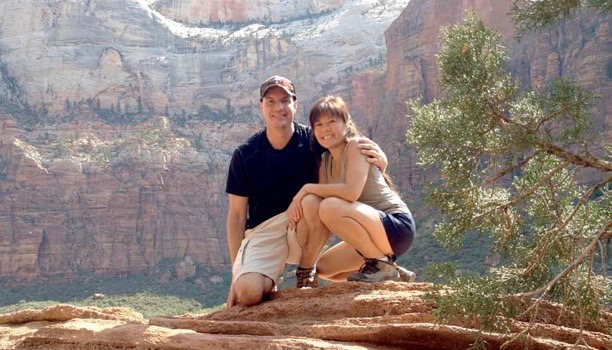
As a scientist Chris Benedict, Ph.D., came of age during the heyday of gene therapy. But when the first clinical trials failed, the initial excitement quickly faded and gene therapy fell off the cliff. “I did my Ph.D. during that window,” remembers Benedict, Associate Professor in the Division of Immune Regulation, who was working on retroviral vector gene therapy at the time. “I started when gene therapy was red hot and I finished when gene therapy was almost dead, although it may be resurrected with newer technologies.” After completing his Ph.D., Benedict was still very much interested in viruses but decided to take two steps back and change perspective. Instead of trying to engineer viruses to stay under the radar of the immune system while slipping their therapeutic payload into cells, he became interested in the continually evolving power balance between the immune system and viruses trying to gain a foothold in our body. He uncovered several important mechanisms that allow viruses to evade the immune system and identified a subset of immune cells that keep cytomegalovirus, a rarely mentioned member of the herpes virus family, at bay.

What sparked your interest in science?
A: The Science Olympiad was paradigm-shifting for me. I got involved when I was in high school and our team made it to a couple of the Nationals. One year we built a catapult that we launched to hit a pin over 30 feet away and we hit the pin. That was the moment when I got excited about the idea of maybe majoring in science. I always had a bit of a competitive edge in me—I was a tennis player and on a tennis scholarship—and when we put the Science Olympiad competition together it struck a chord with me and for the first time I could see myself as a scientist.
What is the overarching interest that drives your research?
A: My research program has two distinct aspects: What can we learn from how cytomegalovirus (CMV) thwarts our immune system? Can we use the information to develop drugs? CMV is very efficient in inhibiting our immune system. What if we could employ the same principles in treating arthritis or lupus? The second aspect is: How can we help people who are really affected by CMV?
Why CMV? It seems to be a rather obscure virus.
A: CMV is actually the No. 1 infectious cause of congenital birth defects in the world. Half of the population in the U.S. has been infected with CMV and infected individuals will carry the virus for the rest of their lives. In most people it doesn’t cause any symptoms and you wouldn’t even know that you’ve been infected. But when babies are infected in the womb it can cause severe birth defects such as hearing loss, brain damage, and even death. The virus can also be reactivated in immune-suppressed people and it is a big concern in transplant recipients. Fifty percent of late stage AIDS patients go blind from CMV-induced retinitis.
Why can’t our immune system fight off the virus?
A: CMV and other members of the herpes virus family have a lot of tricks up their sleeve. CMV dedicates more than half of its large genome to throw up a smokescreen for the immune system. Its genome or genetic material is nearly 20 times bigger than influenza virus, and therefore, it has enough room to incorporate genes it has stolen from its hosts over time. We found that one of them is a TNF-receptor-like molecule, a molecule
important for immune cell communication. This was really an important moment for me. Here’s a virus that has been evolving with us and took some of our immune system genes, molding and shaping them to establish a détente with the immune system. As a result it can hang around and never gets cleared. There is a lot of information we can glean from studying CMV.
Which aspect of being a scientist to you enjoy the most?
A: The best part is the puzzle. The puzzle is never solved. I am a person who is easily distracted or gets bored if I don’t have a new challenge to work on. Every discovery shows you what more you don’t know. That aspect of the job is really exciting for me. There’s also an altruistic aspect to it in that I really would like to help develop a CMV vaccine, especially in the context of congenital CMV infection.
What’s your advice to the next generation of scientists?
A: Embrace the frustration. Any scientist who is successful will tell you that things go in ebbs and flows. Scientific progress is the sum total of a lot of slow processes, which, over time, leads to an Aha! moment—if you are lucky. To get there, you have to push through many failures and you have to be able to embrace that. You have to tell yourself that you are working on the cutting edge of knowledge and it is not going to be easy.
How do you get out of a rut?
A: When I hit a roadblock, I push really hard and then I push some more. If I still don’t get anywhere, I back off, try to clear my mind and come back with a fresh point of view. These are hard questions and sometimes you can’t just power through it. To give myself a break I play soccer or tennis with my son or go surfing. I just bought a bike to get my stress out. I’ve always been a firm believer that it is very important to have interests outside the lab, to read widely, and to spend time with the family. Having that kind of balance has always allowed me to refresh my mind and come back and solve problems.


